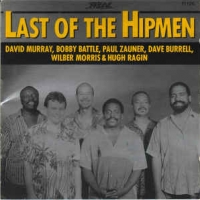Have we really moved that far in the past 30 years?
I keep seeing people posting on forums and social media that we haven't really progressed in hi-fi quality over the past N decades.
It crossed my mind that these are often the same people who spin vinyl and use valve amps. Something in common?
Off to don my suit of armour :-D
:-h 
Comments
;-)
There are a number of examples of outstanding pieces of equipment that are outstanding today, with no modification or updated parts : Quad ESL57's ; WE555 , Altec 288C,G&H , and Vitavox S2 compression drivers ; many of the light-coned alnico bass drivers like the Altec 414a, and 515's ; The Ortofon SPU and almost all of the best directly-heated triodes.
To say "Old design with new components, or old components with a new design, it doesn't matter. Either set of gear is of today, not several decades ago" is a major disrespect to the designers who developed these designs or pieces of kit. To say that the Western Electric 300B push-pull theatre amps are 'of today' because they are slightly better if you build them with the best of modern capacitors and transformers, is a slap in the face to the engineers who developed these wonderful designs. Some of the design tricks and original thinking in these amps has only been rediscovered in the last 10 years . That knowledge would certainly have been lost if everyone had the idea that "we've moved on - modern kit is really better you know" .
If i've misunderstood the point, apologies.
I think Col's views are particularly interesting as he has improved older designs and developed new ones.
I think it's fair to say that the general level of HiFi quality has improved over thirty years, but good sound is a multi-dimensional beast . More than once I've been stopped in my tracks by certain older pieces of kit ( like the SPU cartridge for instance ) giving me a shock and a sudden re-adjustment of how good certain aspects of the sound could be . I agree with a great deal that Matt said, in this respect.
One of the most significant trends in audio in the last 30 years was the Japanese ( and then the Americans ) 'rediscovering' the simple no-feedback triode circuits of the 1930's and the products that came out of that DIY activity in the early 90's . I'm sure it pushed a lot of the solid state designers to re-appraise the potential of their circuits and improve them - and I will not argue that solid-state amps have come a long way in the last 30 years .
It was specific to what Dave said -
"Old design with new components, .............................., it doesn't matter. Either set of gear is of today, not several decades ago."
So your comment :
"What would be a slap in the face is someone doing the same thing with say different materials and claiming that it was their idea." is really exactly that thing I was complaining about .
Forgive me for digging my heels in here , I'm a designer and engineer ( in optics ) and I don't take kindly to people taking credit for other peoples work, however long ago it was . There are a lot more people in this world taking credit for, and making a living out of, the work of talented designers and scientists, than there are people who can actually understand and perform that work .
Hey, this thread is an ideal vehicle for me to let off steam ;o)
This is an interesting discussion, and I appreciate both Col's & island's contributions.
What is amazing is (some of) the designers of yesteryear were able to accomplish so much without modern components with their fine tolerances and capabilities. Instead they relied on a bit of test gear and lots of knowledge/experience, followed by much trial and error. I agree that there is little to be applauded when a johnny-come-70-years-lately pops on the scene and puts some shiny modern caps or silicone into the circuit (which, as Col has hinted at, was better when it was based on Germanium anyway)!
Chatting with Col over the years has led me to believe more has been forgotten in audio design than is currently utilised. Coupled with humans pathological need for certainty (this is best, it is the only best way to make this work), we are now presented with only a narrow view of what is possible.
Often a piece of equipment will be improved with a modern equivalent part, if the original is out of spec. But I don't think that's what we are debating. It seems that re-learning forgotten electronics from an age ago would be a fine foundation for building better things today.
Definitely, there's a huge amount of 'lost' knowledge contained in circuits and technical papers from the audio archives , even if we are not talking about people directly copying entire circuits. This is why I don't want to hear people saying we can almost 'put the past behind us' . Often a short-cut to going forward to is to look carefully through what was done in the past to find interesting lost or abandoned ideas that ended up sidelined.
One good example is a trick Western Electric used in their 300B Push-pull amps of the 1930's, which a couple of the US DIY guys only rediscoverd about 10 years ago. It basically was a very simple tweak using a resistor in a specific location, that converted some residual 3rd-harmonic distortion into 2nd-harmonic . I myself used this tweak in a PP 300B amp I had at the time, and the effect on tone on vocals was quite significant .
This idea was effectively lost in the (paper) archives after the 1940's when people moved on to PP Pentode amps to get more power .